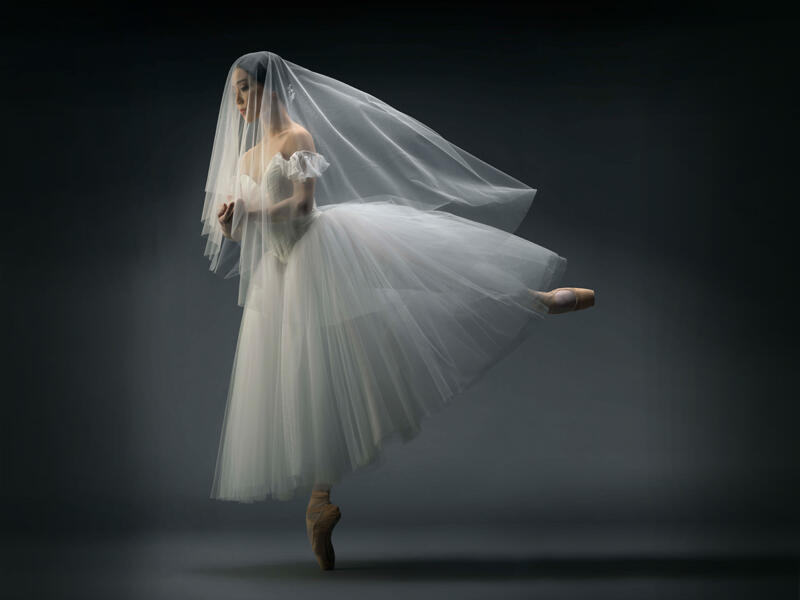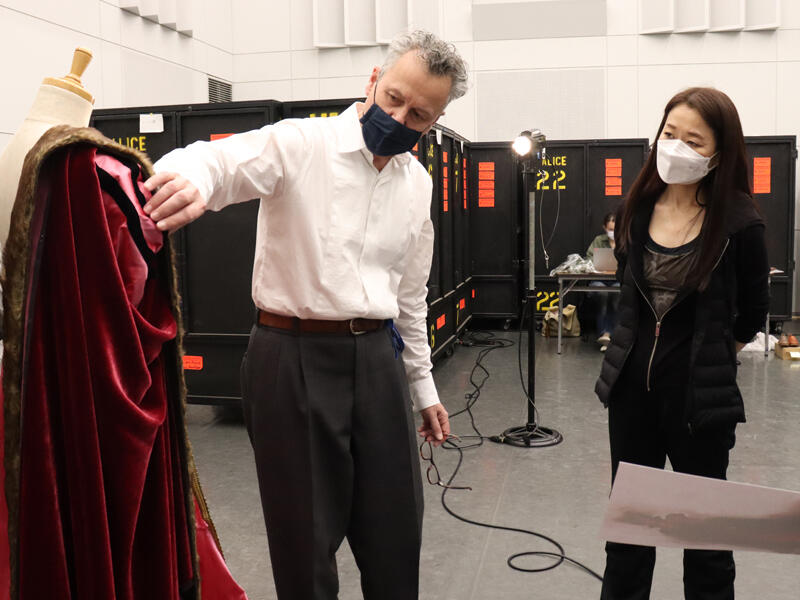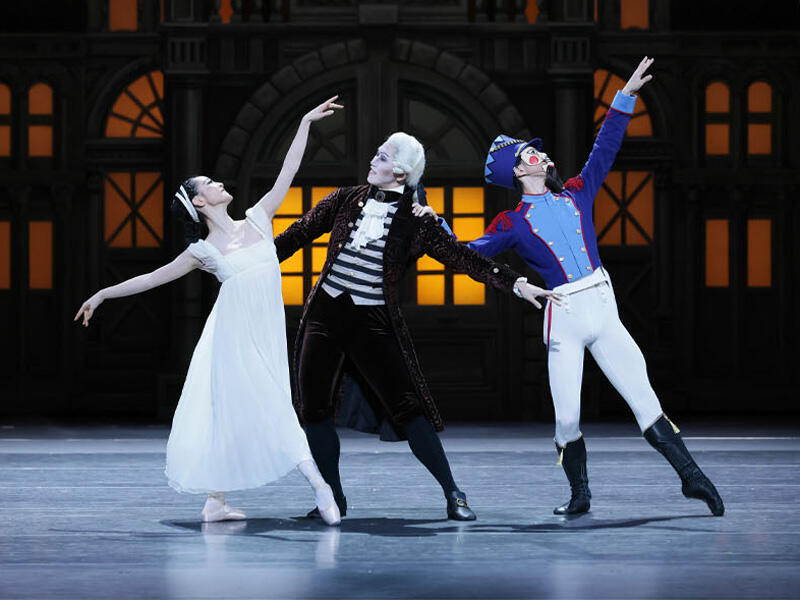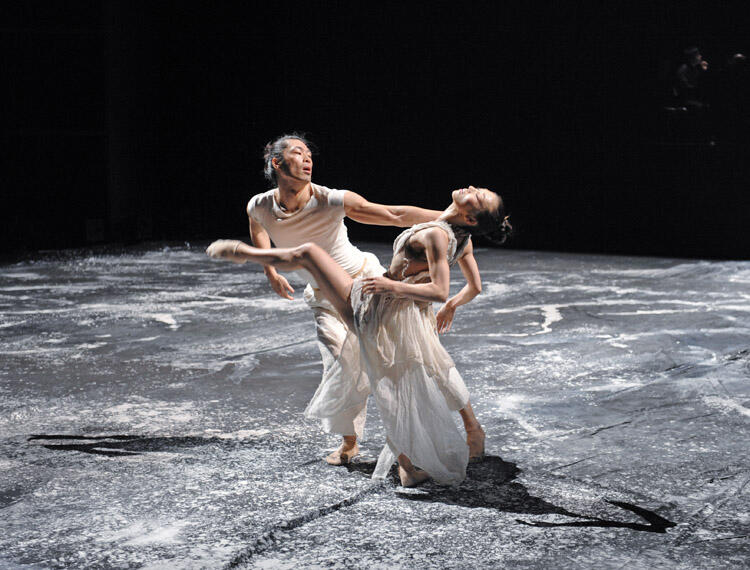Interview: Artistic Director of Ballet and Dance YOSHIDA Miyako talks about the 2022/2023 season
- Delivering the best possible performances: various initiatives including improvements in facilities and medical care quality
―Since you became Artistic Director, you have set various goals and have brought fresh new perspectives to the New National Theatre, Tokyo (NNTT). Looking back on the 2021/2022 season, could you share with us some of the achievements you are most proud of?
The first thing I would like to mention is the improvement in medical care quality. Whenever a dancer gets injured, now we can immediately see their injury status so that it is easier for me to decide whether they can return to the stage, or if a cast change is required. During the national tour, local medical staff accompanied us to deal with emergencies, which gave us a great sense of security.

YOSHIDA Miyako
We also held regular medical seminars to help dancers understand their bodies, and this is something we would like to continue from the next season onwards as well. Participation is on a voluntary basis, but many dancers are now able to use training machines correctly thanks to the support of instructors for muscle strengthening, gyro, and Pilates. I believe we have made a lot of progress in terms of the dancers' physical care.
I am also particularly happy that we are going to have a new, additional studio. In order to increase the number of performances, we need to assemble new principal casts and rehearse more, for which the existing studios are not sufficient. As the number of studios increases, we would also like to strengthen the artistic staff members who are able to guide our dancers. The number of performances is increasing steadily, and we are planning to have 59 performances in the next season.
In terms of makeup, we've been continuously working on developing makeup that suits Japanese dancers, as well as the improvement of our makeup techniques, in cooperation with Chacott. I hope that NNTT can lead the way in developing the ballet makeup of the future, and that other ballet companies will follow suit. Guest teachers for Cinderella also mentioned that the makeup for Cinderella's Stepsisters should be updated and their exaggerated false noses had been removed, so I am glad that what I am trying to do is taking things in the right direction.
―We can clearly see results from what you have been doing so far. What would you like to focus on, going forward?
We also introduced a new pas de deux class during the non-rehearsal period. Less experienced male dancers can learn a lot more efficiently from proper instructions by experienced teachers, rather than just watching others and following their example. Female dancers also need an opportunity to learn how to be supported by their partners. Since new choreography tends to involve increasingly tricky lifts, I would like to strengthen our dancers' partnering techniques further in cooperation with the NNT Ballet School, so that our dancers can quickly respond to any challenging choreography.
It is also important to create opportunities for our dancers to deepen their understanding through lectures, so that they can learn more about the work, the choreographer's intentions and style. For example, in Cinderella, I repeatedly told the Corps de Ballet members that the dance of the Stars requires not only sharp movements but also conveying gentle, warm, sparkly images through dance. When I was dancing the role of Cinderella, I always felt the warmth of the Stars who accompanied me to the ball and stayed with me until the very end. I believe that communicating a clear image with our dancers is very important, and will eventually make a difference to our performance on stage.
Recently, we have been offering a lesson to dancers who were forced to return to Japan due to the current situation in Ukraine, so that they can sustain their artistic practice. I am very grateful to the NNTT for allowing us to accept them, despite the strict visitor restrictions due to COVID-19.
For Alice's Adventures in Wonderland© by Christopher WHEELDON, we had a guest dancer for the first time in a while. Our dancers were so excited that I realised the importance of inviting guests from other companies. I am also very happy that up-and-coming dancers who were selected for solo roles showed us a great performance on stage. I am looking forward to discovering various sides to our dancers by giving them a chance to shine.
- New season line-up with a strong focus on a joy of acting
―Your third season as Artistic Director seems very ambitious, including some new productions. The season begins with a new version of Giselle, staged by yourself.
Working together with our dancers over the past two years helped me clearly understand what they need and what kind of work suits them. I have created this line-up by considering the overall balance of new productions, as well as revivals.
I must say I am heavily influenced by Sir Peter WRIGHT's Giselle, which was the most familiar production for me when I was a dancer, but I do not want to imitate his version. What I am aiming to do with this new production is to pass on what I learnt from Sir Peter to our dancers, and I want them to feel a real joy of acting.
Set Designer Dick BIRD is full of ideas, and his design draws inspiration from the paintings of the period in which the ballet is set. I believe his set and costume design will convey various things to the audience. I have invited Alastair MARRIOTT as a choreographer, who used to be my colleague at the Royal Ballet, performing Simone in La Fille mal gardée and the Stepsister in Cinderella when I was dancing the title roles. That is why I trust him fully, knowing that he understands my tastes very well. It will be a classical Giselle, rather than a modern one.

"Giselle"

"Giselle" Set and Costume Designer, Dick BIRD and YOSHIDA Miyako
― Following Giselle, you will have another new production, Macbeth. The music is the ballet score "Macbeth Suite" by Geraldine MUCHA, and the choreography is by Will TUCKET.
It all started when Her Imperial Highness Princess TAKAMADO introduced me to "Macbeth Suite". This music was composed as a ballet suite, but this is the first time it will be used for a ballet. I am very excited because it is my first time creating a new work in this way. I think the choreography will be based on classical steps, and I cannot wait to see the result because Will is full of thrilling ideas. It will be a work for probably 20-25 dancers. Some of them are quite strong characters, so I believe our dancers need to focus more on acting. We will present it as part of Shakespeare Double Bill, together with The Dream, which was unfortunately cancelled in the 2021/22 season.
As part of New Year Ballet, we will be finally able to perform A Million Kisses to my Skin, which was also cancelled in 2021. When it comes to David DAWSON's work, it is very important to have him in the rehearsing process, and I hope our dancers will absorb lots of things directly from him. It will be performed alongside BALANCHINE's glorious Symphony in C and I am sure this will make a perfect programme for the new year.
―In the 2021/22 season, a long running performance of The Nutcracker and the Mouse King saw huge success and introduced us to a new way of spending the new year's holiday: watching ballet in the theatre.
I was quite worried in the beginning because in Japan, the Christmas mood is more or less over by 25th December and everyone starts getting ready for Oshogatsu (Japanese new year) from that date on. It was a pleasant surprise to see such great audience turn-out, even during the first three days of the New Year. I would love to continue our long running performance over the winter holiday period every year. It's quite challenging to get ready for New Year Ballet straight after, but I believe it is worthwhile Coppélia by Roland Petit was streamed in 2021 with no audience, which received a great response. I really would like the audience to be able to watch this ballet at the theatre this year.

"The Nutcracker and the Mouse King"
―In the 2021/22 season, a long running performance of The Nutcracker and the Mouse King saw huge success and introduced us to a new way of spending the new year's holiday: watching ballet in the theatre.
I was quite worried in the beginning because in Japan, the Christmas mood is more or less over by 25th December and everyone starts getting ready for Oshogatsu (Japanese new year) from that date on. It was a pleasant surprise to see such great audience turn-out, even during the first three days of the New Year. I would love to continue our long running performance over the winter holiday period every year. It's quite challenging to get ready for New Year Ballet straight after, but I believe it is worthwhile Coppélia by Roland Petit was streamed in 2021 with no audience, which received a great response. I really would like the audience to be able to watch this ballet at the theatre this year.
―This time round, Swan Lake will be performed as part of the educational programme (vol. 2) aimed at children and those watching ballet for the very first time.
You can watch plenty of videos on YouTube and other platforms but it is difficult to understand the true beauty of ballet without going to the theatre. The educational programme was designed to make ballet and theatre more accessible. When we streamed Coppélia Ballet by Roland Petit, we received many comments from the people who watched ballet for the first time with that streaming. I hope the educational programme will become a great introduction to ballet, but I am also aware that we should be very careful at the same time - because if you only seek to make ballet easier to understand, some of the beauty of ballet will be lost. In order to keep the beauty of classical ballet, we are performing an entire act from beginning to end, instead of just showing some excerpts. For example, the entire second act of Cinderella was planned to be performed as part of our first educational programme, titled as "Welcome to Cinderella's Castle!", but unfortunately had to be cancelled. Now we are going to perform Act 3 of Swan Lake almost entirely as part of our next educational programme. The last thing I want to do is to ruin the structure and flow of the original ballet.
―Speaking of the updated makeup of the Stepsisters in Cinderella, I also noticed that their acting seemed less exaggerated than before. Is it because you were conscious of the impact on children?
Most of the scenes where they shove or hit each other had been cut. ASHTON intended to make the roles of the mean Stepsisters funny and lovable, so they should never be scary. Wendy [Ellis SOMES], our guest supervisor, was also emphasising that point, altering the stage direction quite significantly. Taking into account how it is reflected in the eyes of today's children, we are aiming to create a production that will stand the test of time.
―How about the dance line-up?
We will have a revival of The Rite of Spring by HIRAYAMA Motoko, and also feature the past important works of Japanese modern dance as part of DANCE ARCHIVES in JAPAN. On the other hand, we will have some new works, such as HIRAYAMA's The Afternoon of a Faun, which will mainly feature male dancers and will be presented together with The Rite of Spring. DANCE to the Future 2023 is a very popular series with the audience, and also helps me discover something new each time. As for the dance line-up, I was also conscious of having a good balance between revivals and new works.

"The Rite of Spring"
―I'm really looking forward to the new season of both ballet and dance. Thank you very much.
(Interview by MORIYAMA Mika)

